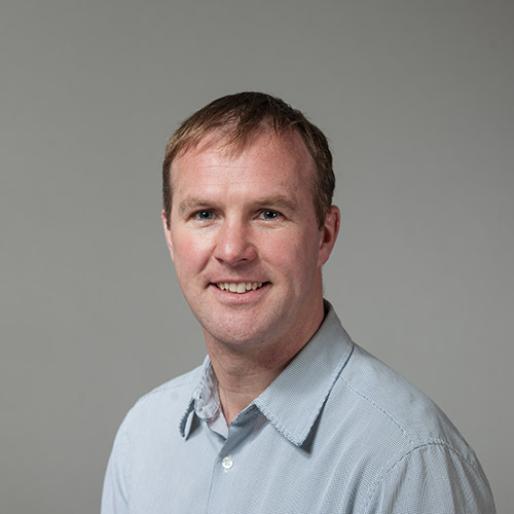The big picture: using wildflower strips for pest control
Microplastic concentrations in agricultural soils increase over time and application of organic and inorganic fertilisers are significant contributors to this trend, according to new research recently published in the journal Nature Communications Earth and Environment.
The study made use of the soil samples collected periodically from Rothamsted’s long-term Broadbalk experiment, which has been running since 1843. Between 1997 and 2005 microplastic increases of up to 350% were found on experimental plots treated with commercial fertilizers.
Microplastic particles are intentionally added to the coating surrounding the fertiliser granules. This forms a barrier that ensures that the nutrients are released more slowly. Annually across the UK, 22,500 tonnes of microplastics are thought to be released from fertilizers and additives. Some microplastics are also deposited from farm machinery or may be wind-blown onto fields.
The soil samples were collected from the Broadbalk winter wheat experiment at 18 different time points between 1846 and 2022 on plots treated with either farmyard manure, inorganic NPK fertilizer or no application. Microplastics were stained with Nile Red and quantified using fluorescence microscopy. A significant increase in microplastic concentrations was observed between 1966 − 2022 across all three treatments, but concentrations were significantly greater under both inorganic fertilizer and organic manure compared to no application. From 1846 − 1914, no microplastics were detected in the samples, consistent with the later invention of modern plastics.
Dr Sam Cusworth of the University of Lancaster who led the study, said, “The impacts of microplastic pollution on agricultural productivity are largely unquantified and unreliable - we simply don’t have enough evidence from longer-term field trials. Given that microplastic concentrations will likely continue to accumulate in agricultural soils from both agricultural and other sources, the effects of microplastics in farming systems should be better understood.”
To date there are no known means by which microplastic accumulation in soils can be reversed, and most reported interactions between microplastics and soil fauna, vegetation, microbiota and crop production appears to have negative effects.
“The accumulation of microplastics in agricultural soils over time poses a direct threat to agricultural productivity and food security,” said Dr Cusworth. “With no immediate solution to remediate microplastic pollution on the horizon, it is critical to reassess our relationship with plastic use in agriculture and beyond.”
The study highlights the ongoing value of Rothamsted’s long term experiments to support new research. Complete soil and plant sample sets spanning the entire lifetime of the experiments are carefully dried and stored in the Rothamsted Sample Archive. This provides a unique “time machine” that allows researchers to look back at changes in agriculture and the environment over long periods.

SOIL SCIENTIST
Rothamsted Research is the longest-running agricultural research institute in the world. We work from gene to field with a proud history of ground-breaking
discoveries in areas as diverse as crop management, statistical interpretation and soil health. Our founders, in 1843, were the pioneers of modern
agriculture, and we are known for our imaginative science and our collaborative approach to developing innovative farm practice.
Through independent research, we make significant contributions to improving agri-food systems in the UK and internationally, with
economic impact estimated to exceed £3 bn in annual contribution to the UK economy. Our strength lies in our systems approach, which combines strategic research,
interdisciplinary teams and multiple partnerships.
Rothamsted is home to three unique National Bioscience Research Infrastructures which are open to researchers from all over the world:
The Long-Term Experiments,
Rothamsted Insect Survey and the
North Wyke Farm Platform.
We are strategically funded by the Biotechnology and Biological Sciences Research Council (BBSRC), with additional support from other national and
international funding streams, and from industry. We are also supported by the Lawes Agricultural Trust (LAT).
The Biotechnology and Biological Sciences Research Council is part of UK Research and Innovation, a non-departmental public body funded by a grant-in-aid
from the UK government.
BBSRC invests to push back the frontiers of biology and deliver a healthy, prosperous and sustainable future. Through our investments, we build and support a vibrant,
dynamic and inclusive community which delivers ground-breaking discoveries and develops bio-based solutions that contribute to tackling global challenges,
such as sustainable food production, climate change, and healthy ageing.
As part of UK Research and Innovation (UKRI), we not only play a pivotal role in fostering connections that enable the UK’s world-class research and innovation system
to flourish – we also have a responsibility to enable the creation of a research culture that is diverse, resilient, and engaged.
BBSRC proudly forges interdisciplinary collaborations where excellent bioscience has a fundamental role. We pioneer approaches that enhance the equality, diversity,
and inclusion of talent by investing in people, infrastructure, technologies, and partnerships on a global scale.
The Lawes Agricultural Trust, established in 1889 by Sir John Bennet Lawes, supports Rothamsted Research’s national and international agricultural science through the provision of land, facilities and funding. LAT, a charitable trust, owns the estates at Harpenden and Broom's Barn, including many of the buildings used by Rothamsted Research. LAT provides an annual research grant to the Director, accommodation for nearly 200 people, and support for fellowships for young scientists from developing countries. LAT also makes capital grants to help modernise facilities at Rothamsted, or invests in new buildings.